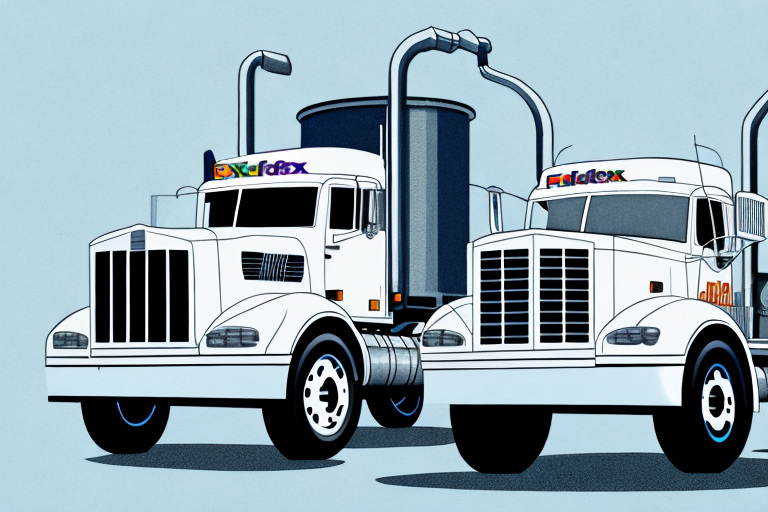Understanding the FedEx Fuel Surcharge
The FedEx fuel surcharge is an additional fee applied to shipping costs to offset the fluctuating price of fuel. This surcharge helps FedEx manage the rising expenses associated with fuel for its delivery vehicles and jet fuel for air freight operations. Unlike taxes or government-imposed fees, the fuel surcharge is a dynamic component of FedEx's pricing strategy, adjusting regularly based on fuel price indices.
Definition and Purpose
The fuel surcharge is calculated as a percentage of the base shipping cost. Its primary purpose is to ensure that FedEx can maintain profitability and service quality despite volatile fuel prices. By adjusting the surcharge in response to fuel price changes, FedEx can provide more stable base rates to customers.
Impact of Fuel Prices
Fuel prices directly influence the fuel surcharge. When fuel prices increase, the surcharge rises correspondingly, and vice versa. This responsiveness ensures that shipping costs remain aligned with actual fuel expenditures. According to the U.S. Energy Information Administration, fuel prices can fluctuate due to various factors, including geopolitical events, natural disasters, and changes in supply and demand.
Historical Background
The FedEx fuel surcharge was introduced in 2001 as a response to rising fuel costs that were not sustainable within the base shipping rates. Over the years, the calculation methods and rates have been refined to better reflect the current fuel market conditions. Despite criticisms regarding its complexity and variability, the surcharge remains a crucial element of FedEx’s pricing model.
Calculating the FedEx Fuel Surcharge
Understanding how the fuel surcharge is calculated can help businesses and individuals better anticipate shipping costs.
Calculation Methodology
The fuel surcharge is determined using the following steps:
- Identify the current fuel price index, typically based on the U.S. Gulf Coast spot price for kerosene-type jet fuel.
- Divide the current fuel price index by the benchmark price.
- Multiply the result by 100 to obtain the percentage rate.
- Apply this percentage to the base shipping cost to calculate the fuel surcharge amount.
Factors Influencing the Rate
Several factors can affect the fuel surcharge rate, including:
- Fuel Prices: The primary determinant, as fuel prices are inherently volatile.
- Shipping Volumes: Higher volumes can lead to economies of scale, potentially lowering the surcharge.
- Delivery Locations: Remote or international destinations may incur higher surcharges due to increased fuel consumption.
- Delivery Services: Air freight typically has a higher surcharge compared to ground shipping.
Managing and Minimizing Surcharge Costs
While the fuel surcharge is a fixed expense, there are strategies to minimize its impact on overall shipping costs.
Estimating Shipping Costs
FedEx provides online rate calculators that allow customers to estimate shipping costs, including the fuel surcharge. By inputting details such as origin, destination, package weight, and dimensions, users can obtain a comprehensive cost estimate. This transparency aids in budgeting and cost management.
Tips and Tricks
- Consolidate Shipments: Combining multiple packages into a single shipment can reduce the total number of surcharges applied.
- Choose Fuel-Efficient Services: Opting for ground shipping over air freight can result in lower surcharges.
- Optimize Packaging: Reducing package weight and dimensions can decrease the base shipping cost, thereby lowering the fuel surcharge.
- Negotiate Rates: Engaging with FedEx representatives to negotiate better rates based on shipping volume can lead to more favorable surcharge terms.
Negotiating Better Rates
Businesses with consistent shipping needs may have leverage to negotiate better rates, including the fuel surcharge. Demonstrating steady shipment volumes and exploring contract-based agreements can result in reduced surcharge percentages.
Comparing FedEx to Other Shipping Companies
Understanding how FedEx's fuel surcharge compares to those of other shipping providers can inform more cost-effective shipping decisions.
Surcharges Comparison
Similar to FedEx, other major carriers like UPS and DHL implement fuel surcharges. The rates and calculation methods may vary, but the underlying principle of offsetting fuel costs remains consistent across the industry.
Pros and Cons of Fuel Surcharges
Including a separate fuel surcharge offers both advantages and disadvantages:
- Pros:
- Enhanced transparency, allowing customers to see how fuel costs impact shipping fees.
- Flexibility in adjusting surcharges in response to real-time fuel price changes.
- Cons:
- Potential confusion due to the additional layer of fees.
- Difficulty in predicting final shipping costs when fuel prices are volatile.
Future Outlook and Industry Trends
The future of fuel surcharges in the shipping industry is shaped by evolving market conditions and technological advancements.
Future Predictions
With the increasing adoption of electric and hybrid delivery vehicles, the dependency on traditional fuel sources may decrease, potentially reducing the need for significant fuel surcharges. However, until such technologies are widely implemented, fuel surcharges will likely remain a staple in shipping pricing models.
Industry Insights
Experts anticipate that shipping companies will continue to explore innovative ways to manage fuel costs. Investments in renewable energy sources and more fuel-efficient logistics practices are expected to play pivotal roles in shaping future surcharge structures.
Alternatives to Fuel Surcharges
Some carriers are experimenting with alternative pricing models, such as flat-rate or all-inclusive pricing, which bundle surcharges into the base shipping fees. While this can simplify billing, it may obscure the cost breakdown and make it harder for customers to assess fuel cost impacts.
Regulatory Environment
Government regulations can influence how shipping companies implement and disclose fuel surcharges.
Government Regulations
In certain jurisdictions, regulations may dictate the transparency and calculation methods of fuel surcharges. For example, some countries require shipping companies to provide detailed breakdowns of surcharge calculations to protect consumers from unfair pricing practices.
Impact on Surcharge Practices
Compliance with regulatory standards can lead to more standardized and transparent surcharge practices across the industry, fostering greater trust and consistency in pricing for consumers.
Conclusion
Understanding the FedEx fuel surcharge is essential for businesses and consumers alike. By comprehending how the surcharge is calculated and the factors influencing it, stakeholders can make informed decisions to manage and potentially reduce shipping costs. Staying informed about industry trends and regulatory changes will further aid in navigating the complexities of fuel surcharges in shipping.
Frequently Asked Questions
- What is the FedEx fuel surcharge?
The FedEx fuel surcharge is an additional fee applied to shipping costs to offset the fluctuating price of fuel.
- How is the FedEx fuel surcharge calculated?
It is calculated as a percentage of the base shipping cost, determined by current fuel price indices.
- Why does FedEx charge a fuel surcharge?
To manage the rising and volatile costs associated with fuel, ensuring sustainable pricing and service quality.
- How can I estimate my shipping costs including the fuel surcharge?
Use FedEx's online rate calculators by entering shipment details to obtain an estimated cost inclusive of all surcharges.
- Can I negotiate the fuel surcharge rate?
Potentially, especially for businesses with high shipping volumes or long-term contracts. It’s advisable to discuss options directly with FedEx representatives.
For more detailed information on the FedEx fuel surcharge, visit the FedEx official website or contact their customer service team.






















